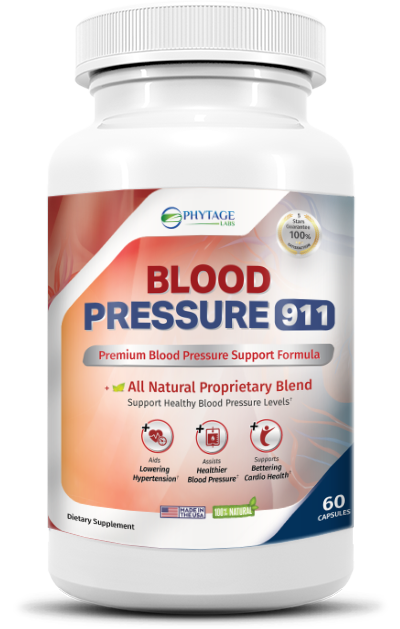
Blood pressure is a vital measure of your overall health. It’s often described as the silent killer because it can silently damage your arteries and organs for years without any noticeable symptoms. However, with awareness, knowledge, and the right lifestyle choices, you can maintain healthy blood pressure and reduce the risk of related health complications. In this 2,000-word article, we will delve into the world of blood pressure, exploring its significance, causes of hypertension, and strategies for achieving and maintaining healthy blood pressure levels.
Section 1: What is Blood Pressure?
Blood pressure refers to the force of blood against the walls of your arteries as your heart pumps it around your body. It’s typically measured in millimeters of mercury (mmHg) and consists of two numbers: systolic (the top number) and diastolic (the bottom number). The systolic pressure represents the force when the heart contracts, while the diastolic pressure represents the force when the heart is at rest between beats.
Section 2: The Importance of Healthy Blood Pressure
Maintaining healthy blood pressure is crucial for overall well-being. Elevated blood pressure, or hypertension, can lead to a wide range of health problems, including:
- Heart Disease: High blood pressure is a significant risk factor for heart disease, including coronary artery disease, heart attacks, and heart failure.
- Stroke: Hypertension can damage blood vessels in the brain, increasing the risk of strokes.
- Kidney Disease: Uncontrolled high blood pressure can harm the kidneys and potentially lead to kidney failure.
- Vision Problems: Hypertension can damage blood vessels in the eyes, leading to vision problems and even blindness.
- Cognitive Decline: Some studies suggest a link between hypertension and cognitive decline, including dementia.
Section 3: Causes of High Blood Pressure
Understanding the causes of high blood pressure is crucial for prevention and management. Several factors can contribute to hypertension, including:
- Lifestyle Choices: Poor diet, lack of exercise, excessive alcohol consumption, and smoking are known risk factors.
- Genetics: Family history can play a role in your blood pressure.
- Age: As we age, blood vessels naturally become less flexible, leading to increased blood pressure.
- Medical Conditions: Certain medical conditions like diabetes and chronic kidney disease can raise blood pressure.
- Stress: Chronic stress can contribute to elevated blood pressure.
Section 4: Measuring and Monitoring Blood Pressure
Regular monitoring of your blood pressure is essential for early detection and management. You can measure your blood pressure at home using a home blood pressure monitor or visit your healthcare provider for regular check-ups. It’s important to understand what your numbers mean and how to interpret the results.
Section 5: Healthy Lifestyle Choices for Blood Pressure Management
A significant part of managing blood pressure involves making healthy lifestyle choices, which can have a profound impact on your cardiovascular health. Strategies for maintaining healthy blood pressure include:
- Diet: Adopting a heart-healthy diet that is low in sodium, rich in fruits, vegetables, and whole grains can help reduce blood pressure.
- Exercise: Regular physical activity can lower blood pressure and improve overall cardiovascular health.
- Weight Management: Maintaining a healthy weight or losing excess pounds can significantly reduce blood pressure.
- Reducing Stress: Managing stress through relaxation techniques, mindfulness, and other stress-reduction strategies can help lower blood pressure.
- Limiting Alcohol and Quitting Smoking: Reducing alcohol intake and quitting smoking are essential for blood pressure control.
Section 6: Medications for Blood Pressure Control
In some cases, lifestyle changes may not be enough to manage blood pressure, and medications may be necessary. Your healthcare provider can prescribe various types of medications to lower blood pressure, including diuretics, beta-blockers, ACE inhibitors, and calcium channel blockers. It’s essential to follow your healthcare provider’s recommendations and take your medications as prescribed.
Section 7: Blood Pressure Guidelines
Understanding blood pressure guidelines is crucial for interpreting your measurements. The American Heart Association and other medical organizations provide recommended blood pressure ranges based on the two values:
- Normal: Systolic <120 mmHg and Diastolic <80 mmHg.
- Elevated: Systolic 120–129 mmHg and Diastolic <80 mmHg.
- Hypertension Stage 1: Systolic 130–139 mmHg or Diastolic 80–89 mmHg.
- Hypertension Stage 2: Systolic ≥140 mmHg or Diastolic ≥90 mmHg.
- Hypertensive Crisis: Systolic >180 mmHg and/or Diastolic >120 mmHg.
Section 8: Conclusion
Maintaining healthy blood pressure is essential for your overall health and well-being. By understanding the significance of blood pressure, its causes, and strategies for management, you can take control of your cardiovascular health. Regular monitoring, healthy lifestyle choices, and, when necessary, medication, can help you achieve and maintain healthy blood pressure levels, reducing the risk of related health complications. Prioritize your cardiovascular health, and you’ll be on the road to a healthier life.
